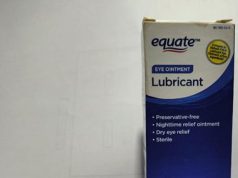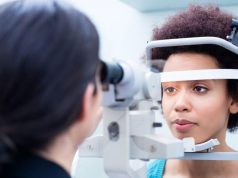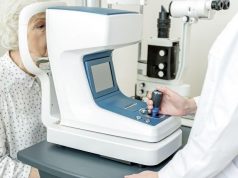The 121st Annual Meeting of the American Academy of Ophthalmology
The annual meeting of the American Academy of Ophthalmology was held from Nov. 11 to 14 in New Orleans and attracted approximately 6,000 participants from around the world, including ophthalmologists, optometrists, opticians, and other eye health care professionals. The conference featured presentations focused on the latest advances in comprehensive eye care, including medical, surgical, and optical care.
In a phase III study, Stephen R. Russell, M.D., of the University of Iowa in Iowa City, and colleagues found that gene therapy resulted in improved vision in 93 percent of patients with Leber congenital amaurosis (LCA).
“We addressed the concern of durability of effectiveness for this gene therapy, which is given a single time. This was the three-year data for voretigene neparvovec,” said Russell. “The results at three years show generally no drop-off in effect in contrast to that found previously. In addition, there was no increase in adverse events. These data add to our accumulating evidence that this therapy has significant efficacy at acceptable safety to begin use immediately following FDA approval, once given.”
Mary Qiu, M.D., of Wilmer Eye Institute in Baltimore, and colleagues found that women prescribed estrogen-only hormone replacement therapy (HRT) after ovary removal had a lower risk of developing glaucoma.
The researchers evaluated 2005-2008 data from the National Health and Nutrition Examination Survey and found that all women who had their ovaries removed and used estrogen-only HRT had 9 percent lower odds of having glaucoma each year they used the therapy.
“While this study doesn’t directly answer the question of why estrogen appears to guard women from glaucoma, it seems likely that estrogen may protect against the nerve damage that happens to the eye in glaucoma patients,” Qui said in a statement. “Future studies should address the potential role of glaucoma screening and hormone replacement therapy in women undergoing ovary removal.”
In another study, Victoria L. Tseng, M.D., Ph.D., of the University of California in Los Angeles, and colleagues found that not just exercise alone but different levels of exercise may be associated with glaucoma risk.
“Participants of the 2005-2006 National Health and Nutrition Examination Survey who had higher levels of exercise intensity as measured by pedometer readings and by questionnaire had lower risk of glaucoma compared to participants with lower levels of exercise intensity,” said Tseng. “While this may be related to changes in intraocular pressure or ocular blood flow, we did not study these factors in the current study and recommend that further studies be performed.”
AAO: Higher Exercise Intensity Tied to Reduced Risk of Glaucoma
TUESDAY, Nov. 14, 2017 (HealthDay News) — Increasing exercise intensity is associated with a reduced risk of glaucoma, according to a study presented at the annual meeting of the American Academy of Ophthalmology, held Nov. 11 to 14 in New Orleans.
Press Release
More Information
AAO: Stem Cell Retinal Pigment Epithelial Cells Safe in Dry AMD
TUESDAY, Nov. 14, 2017 (HealthDay News) — Human embryonic stem cell (hESC)-derived retinal pigment epithelial (RPE) cells transplanted subretinally are safe for advanced dry-form age-related macular degeneration (AMD) as well as for atrophic AMD and Stargardt disease (SD), according to two studies presented at the annual meeting of the American Academy of Ophthalmology, held Nov. 11 to 14 in New Orleans.
Press Release
More Information
AAO: Intranasal Tear Neurostimulator Safe for Dry Eye
TUESDAY, Nov. 14, 2017 (HealthDay News) — An intranasal tear neurostimulator (ITN) is safe and effective for increasing tear production among individuals with dry eye, according to a study presented at the annual meeting of the American Academy of Ophthalmology, held Nov. 11 to 14 in New Orleans.
Press Release
More Information
AAO: No Visual Acuity Change With Dexamethasone in DME
MONDAY, Nov. 13, 2017 (HealthDay News) — The addition of intravitreous dexamethasone to continued ranibizumab therapy does not improve visual acuity in eyes with persistent diabetic macular edema (DME) after anti-vascular endothelial growth factor (anti-VEGF) therapy, according to a study published online Nov. 11 in JAMA Ophthalmology to coincide with the annual meeting of the American Academy of Ophthalmology, being held Nov. 11 to 14 in New Orleans.
Abstract/Full Text
More Information
Copyright © 2017 HealthDay. All rights reserved.







